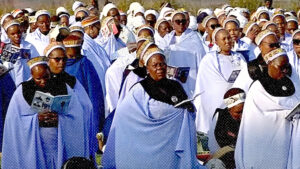Have you ever heard the statement “our country doesn’t have an orphan problem”? In many African countries, people truly believe this because if a child is orphaned, the responsibility automatically falls on the extended family. In fact, according to UNICEF, extended families are caring for 90% of all orphans across Africa.
Mozambique is one such country but the reality is that there are 12 million children in Mozambique, which makes up 52% of the population. Of those children, approximately two million are orphaned and roughly one fourth have lost their parents due to HIV/AIDS.
I recently had the privilege to travel to Matola, just outside of Maputo, to visit All Nations Mozambique which was founded on 19 March 2005 by Pieter and Rika Boersma.
There are currently three houses namely Casa 1, Casa Promessa, and Casa Gemma caring for 48 children as well as a brand-new baby house being built, called Casa Valerio. These children’s homes are not only places of safety for orphaned, abandoned, and vulnerable children, but they are also warm and welcoming family homes.
The status of adoption in Mozambique
Though Mozambique is a poor country, Rika explains that modernisation has led to a clear distinction between people of the “old culture” and those of the “new culture”. But even so, for old and new generation Mozambicans alike, children are a big deal.
Here is where the difference comes in: the old culture was never really pro-adoption because adopting a child would create the image of a woman giving up trying to bear her own children and would thus be scandalous for a family.
The new culture’s modern Mozambican, on the other hand, is open to adoption. This is evident in that All Nations Mozambique has placed 20 children in wonderful, younger Mozambican families.
This brings us to the next point. Who can adopt a child in Mozambique and what is the process?
The adoption process in Mozambique
Firstly, it’s necessary to understand that there is a difference between orphans and abandoned children. Orphaned children usually lost one or both of their parents, but often still have aunts, uncles, cousins, or grandparents (the extended family) that will take care of the the child.
Abandoned children are either purposefully left behind at a bus stop, school, or shop and often a mother will run away just after she gave birth.
Rika explains that at All Nations Mozambique, it is mostly abandoned children that are eligible for adoption. For one and a half to two years, the authorities will look for evidence to make sure the child has really been abandoned and has no family that will claim him or her. Social welfare will place a photo of the child on television along with contact details. If anyone recognises the child, they need to make contact with the authorities and need to be able to prove that they are family. According to Rika, the Mozambican social welfare does in-depth investigations before the reintegration process will begin.
“We have found this to be a very effective way of finding family members,” Rika says.
After two years, if no one has claimed a child, they become eligible for adoption. Babies, however, needs to stay at the house of safety for at least six months before they can be taken in by an adoptive family, subject to the court’s ruling.
Next steps towards adoption
For international people or those not working and residing in Mozambique, the process to adopt a child is, unfortunately, complicated. Only Mozambicans or internationals working and residing in the country are eligible to adopt. And even if the child is legally adopted, they need to stay in Mozambique until they are 18 years of age.
Adoption agencies aren’t really prevalent in Mozambique but sometimes a person will use a lawyer to do all the dealings on their behalf.
Here are some practical steps to take if this is something you are considering:
- Those interested in adopting need to go to social welfare and apply to become an eligible family or person to adopt.
- A court date will be set and if the court finds the adoptive parent/s eligible, after various investigations, they will issue them with a letter which allows them the right to visit a house of safety. Without that letter, no adoptive parent will be allowed to access the property or even see a child.
- If everything is in place and the letter is presented, the adoptive parent/s may enter the property and meet the children.
- One they have identified a child they connect with and would like to make a part of their family, the manager of house of safety will write a letter with the complete history of the specific child.
- Another court case will begin to connect the child with the parent/s.
- During the waiting period, if there are no problems, the adoptive parents will get visitation rights to start building a relationship with the child.
- This process can take between three months to one year, but under normal circumstances it happens between three to four months.
- A date and time will then be set and the adoption process will begin.
- Papers are signed and all the goodbyes are said.
- A life is changed forever, hopefully for the better.
Rika closes with a story about one of the mothers who came to pick up her new child at one of the homes: “She arrived at the gate with a big brown suitcase. We all helped the little one get his things together but then she opened the suitcase and it was filled with brand-new clothes – all for him! She looked at her new child and said, ‘Just as God has clothed us with new clothing, given us new names, and adopted us into his family, so it will be for you now that you are mine.’ It was so beautiful.”
John Piper once said something so profound: “The gospel is not a picture of adoption. Adoption is a picture of the gospel.”
Perhaps your heart has been stirred many years ago to adopt or perhaps it’s a new idea to you. Adoption is an intimidating thing for believers and non-believers alike. But as believers, we have a mandate from the Lord to take care of the orphans and the vulnerable.
Psalm 82:3 (NLT): “Give justice to the poor and the orphan; uphold the rights of the oppressed and the destitute.”
Many people don’t realise the impact they can have a on a child’s life, whether it’s by adopting or fostering. May God protect us from the day we close our hearts to protect ourselves. May he protect us from the day we fear “getting attached” and then having to let go to such an extent that we rather choose to harden our hearts and do nothing.
The point is, we were all once orphans. But when we accepted Jesus as our Lord and Saviour, we were reconciled to God – our Creator and Heavenly Father. He changed our status from orphans to children of God, adopted into his family.
As a new year begins, let’s meditate on this and let it sink into our hearts. Adoption is the most wonderful, tangible picture we have in this earthly life of what Jesus did on the cross for us: He gave us access to a new home and a new family – God’s family.












